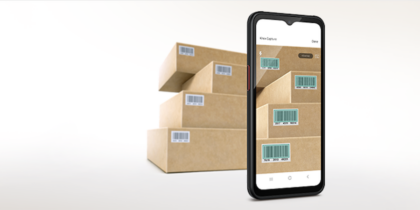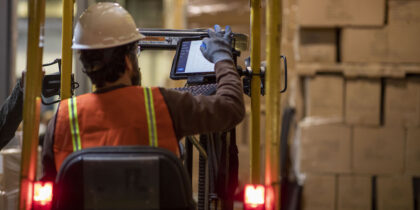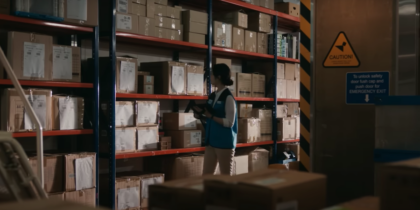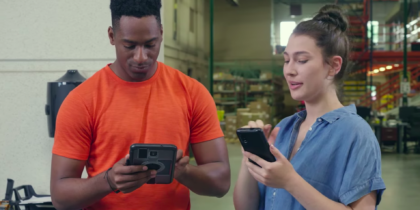U.S. shoppers spent over $70 billion on online retail in June 2020 — a 76 percent increase from the previous June, according to Adobe’s “2020 Digital Economy Index.” To keep up with this influx while maintaining compliance with workplace social distancing guidelines, efficient delivery service is a key competency for both retailers and manufacturers.
Every day, millions of products are ordered online, and in the days that follow, those packages are delivered to doorsteps. Customers have come to expect a seamless experience from order to delivery, which means companies have to get it right. One secret to making it all run efficiently? Mobile technology.
Fast, accurate delivery is important for companies, as missteps can cause customer dissatisfaction, tarnish a brand’s reputation and result in losses associated with missing packages and disputed deliveries.
Conversely, when the process goes right, businesses run more efficiently, and customer satisfaction and brand loyalty improve. Here’s a look into four ways mobile technology can improve the package delivery process.
1. Efficient picking
Mobile devices help pickers efficiently fulfill orders in large warehouses. When a customer places an order online, the information is sent to a company’s shipment management system, triggering the fulfillment process. In large warehouses, the trip to the right aisle can be a long one, and every step matters. Using a route optimization app on a mobile device, the picker is instantly provided with the name of the specific item ordered and its location in the warehouse — say, Section F12, Bin 27. Route optimization software may also include a map showing pickers the fastest route to each item in their batch, streamlining the fulfillment process.
2. Faster scanning
Once items have been packaged, they must be sorted and sent to the appropriate place in the warehouse for distribution. Mobile devices such as the Samsung Galaxy Tab Active3 speed up this process when combined with advanced scanning software and accessories from companies like ProGlove and Scandit.
3. Real-time tracking
As an order makes its way from distribution center to customer, mobile devices enable both the customer and the company to track its progress in real time.
How is this visibility established? As the product and package are scanned at each point in the delivery process, real-time data is fed into the company’s backend system, showing exactly where the package is along its journey. This helps the company make on-time deliveries to the right doorsteps. Even if a label is damaged in transit, advanced scanning software can reconstruct the data on the label and ensure delivery.
Customers benefit, too. With mobile platforms, customers can see their items’ progress and an estimate of when they will arrive. Likewise, if a customer notices a package isn’t moving through the process as expected, they can reach out to the company to resolve the issue.
4. Proof of delivery
U.S. e-commerce customers lost $5.4 billion in the form of stolen packages in 2020, according to a report by Finder. The ability for a delivery driver to prove a package arrived at its destination is crucial for company brand. Mobile technology allows drivers to confirm that a package has arrived in the right place as soon as they reach the customer’s doorstep. Drivers can use a tablet like the Galaxy Tab Active3 or Tab Active Pro or a rugged smartphone like the Galaxy XCover Pro to capture proof of delivery.
The definitive guide to warehouse efficiency
Get your free guide to increasing warehouse efficiencies and cutting costs with mobile processes. Download Now
With this technology, a driver can scan the barcode on a package, take a picture of its drop-off point or capture an electronic signature from the customer if needed. These capabilities allow the driver to demonstrate that the package has arrived intact at the right place. They also allow both the shipper and receiver to see proof of delivery the minute the package is delivered.
Without scanners, cameras and e-signature capture, a driver may be held accountable for a missed delivery with no way to prove they delivered it to the right house undamaged. Proof of delivery confirms for both the shipper and the customer that the package has arrived safely — and helps avoid the additional work and confusion associated with stolen or undelivered packages.
Boost your warehouse’s operational efficiency with this free guide. Then discover how to identify the best rugged mobile device for your warehouse and logistics.







